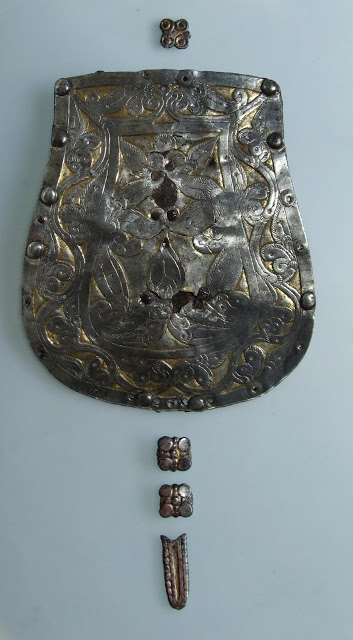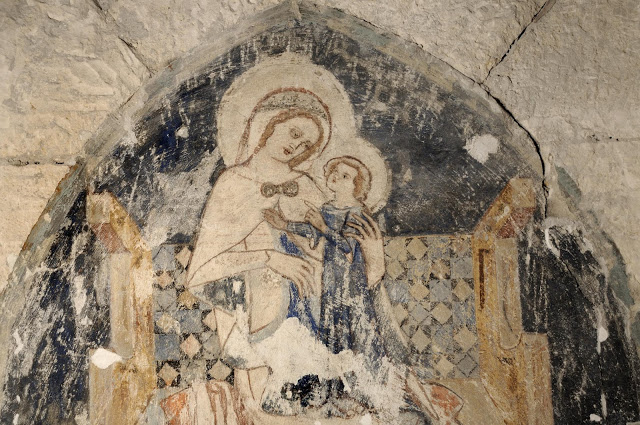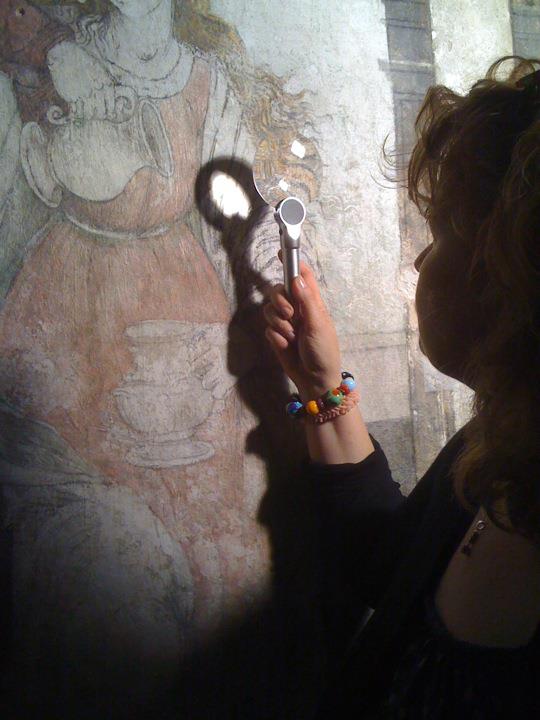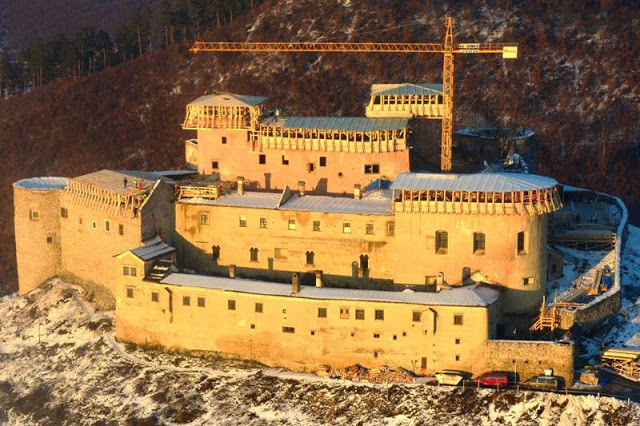Medieval History
- Medieval News Update
During the last five years, I wrote on various subjects on this blog, including the discoveries of treasure hoards and wall paintings, interesting exhibitions and new publications, museum collections and organizational changes and many others. The beginning...
- The Danube Bend In The Middle Ages - Exhibition
12th century stone carving from Vác cathedralA new temporary exhibition opened last Saturday at Vác, dedicated to the medieval history of the region known as the Danube Bend. Stretching from Esztergom through Visegrád down to Szentendre, the area includes...
- Conquest-period Sabretache Plate Found At Hungarian Excavations
Sabretache plate excavated in Pest county Photo from Sírásók naplója blog A Hungarian archaeological blog (Sírásók naplója) reported on a recent lucky find in Pest county of Hungary. Last week, remains from the period of the Hungarian Conquest...
- Blogging Tools I Use
My Flavors.me page I started this blog in August, so about 6 months ago. In this short time, Blogger stats recorded well over 10.000 page views here, which I consider very good for a blog with a somewhat obscure topic. I originally started this...
- Honors For This Blog
Dear Readers, I am very proud to announce that my blog has been listed as one of the 50 best blogs for medieval history geeks. Whether my readers are geeks or not is not for me to say - it still feels good to be listed. My blog entries were also listed...
Medieval History
Most popular posts on Medieval Hungary
The end of the year marks the end of my third year of blogging. Along the way, I have posted 120 posts on various topics related to Hungarian medieval art, which generated over 90.000 page views to this date. My blog was featured in several online journals - for example in Vidimus or in Peregrinus, and several posts have been picked up by other blogs and online news media. I will give a sampling below of the most popular posts on the Medieval Hungary blog, giving a brief update about their topics as well.
The Digital Journal and SCAtoday.net both picked up the report on the discovery a grave from the period of the Magyar Conquest. Found neat the village of Bugyi, the sabretache plate discovered in the grave has since been cleaned and restored, and showed at a traveling exhibition (titled "Not without a trace...") organized by the Pest County Museum system. It was also included in an exhibition first organized at the Houses of Parliament in Budapest, which was aimed at showing the most spectacular recent archaeological finds, in order to pressure lawmakers to not weaken cultural heritage laws. Although this attempt was unsuccesful, the exhibition itself was successful, and is now travelling around the country. The exhibition is accompanied by a very nicely produced website, which is only available in Hungarian. Below you can find a picture of the sabretache plate in its conserved state.
 |
| 10th century sabretache plate from Bugyi-Fels?vány (source: mvmsz.info) |
Moving on to later centuries, most interest was generated by my report on the discovery of 14th century frescoes right in the middle of Budapest, in the Inner City Parish Church of Pest. The news was picked up by Medieval News and other online sources. My brief report on the find, consisting of two blog posts (see part I and part II) was later summarized for the newsletter of the International Center of Medieval Art (April 2011 issue), while my report on Hungarian azurite, found in the background of the painting, was picked up by National Geographic Hungary (May 2011). I also reported on some publications about the murals in a third blog post.
 |
| Detail of the Virgin and Child at the Inner City Parish Church, Pest |
Considerable interest surrounded the purported identification of the master of a 15th century fresco in Esztergom as the work of the young Botticelli, the subject of a post on my blog last year. This story broke in 2007, so I was naturally not the first to report on it, but as my report was also featured in the Art History Carnival of April 2011, as well as in Carnivalesque, the Ancient/Modern edition of the popular History blog - so a lot of readers found it. I had a chance to briefly revisit the issue in my review of Villa I Tatti's conference volume about Italy and Hungary in the Renaissance. Restoration of the frescoes has since stalled, so the frescoes will certainly be a topic of conversation next year, which will be marked by Italian-Hungarian cultural cooperation, including an exhibition dedicated to Renaissance art at the court of Matthias Corvinus, to be held in Florence in Fall 2013.
 |
| Restorer Zsuzsanna Wierdl at the frescoes (Source: Studiolo Facebook page) |
By far the most widely read post on the Medieval Hungary blog concerned the burning of the castle of Krasznahorka in March 2012. Salvaged object from the castle were shown during the second half of the year in the Slovak National Museum at Bratislava Castle. You can read about the exhibition - which closed today - here. Photos of the damage were posted on the castle's Facebook page, while recent images posted on the website of the National Museum indicate that progress on rebuilding the walls and roofs which got damaged in the fire is going well.
 |
| Rebuilding at Krasznahorka Castle |
The top of the right column of this blog features five posts which are currently the most popular - the report on Krasznahorka alone had over 3000 readers. If you want to get all the updates about curent news concerning Medieval Hungary, follow this blog or follow me on Twitter. I will surely continue blogging next year, and will report about new discoveries, exhibitions and publications. With this, I wish all my readers a Happy New Year!
- Medieval News Update
During the last five years, I wrote on various subjects on this blog, including the discoveries of treasure hoards and wall paintings, interesting exhibitions and new publications, museum collections and organizational changes and many others. The beginning...
- The Danube Bend In The Middle Ages - Exhibition
12th century stone carving from Vác cathedralA new temporary exhibition opened last Saturday at Vác, dedicated to the medieval history of the region known as the Danube Bend. Stretching from Esztergom through Visegrád down to Szentendre, the area includes...
- Conquest-period Sabretache Plate Found At Hungarian Excavations
Sabretache plate excavated in Pest county Photo from Sírásók naplója blog A Hungarian archaeological blog (Sírásók naplója) reported on a recent lucky find in Pest county of Hungary. Last week, remains from the period of the Hungarian Conquest...
- Blogging Tools I Use
My Flavors.me page I started this blog in August, so about 6 months ago. In this short time, Blogger stats recorded well over 10.000 page views here, which I consider very good for a blog with a somewhat obscure topic. I originally started this...
- Honors For This Blog
Dear Readers, I am very proud to announce that my blog has been listed as one of the 50 best blogs for medieval history geeks. Whether my readers are geeks or not is not for me to say - it still feels good to be listed. My blog entries were also listed...
